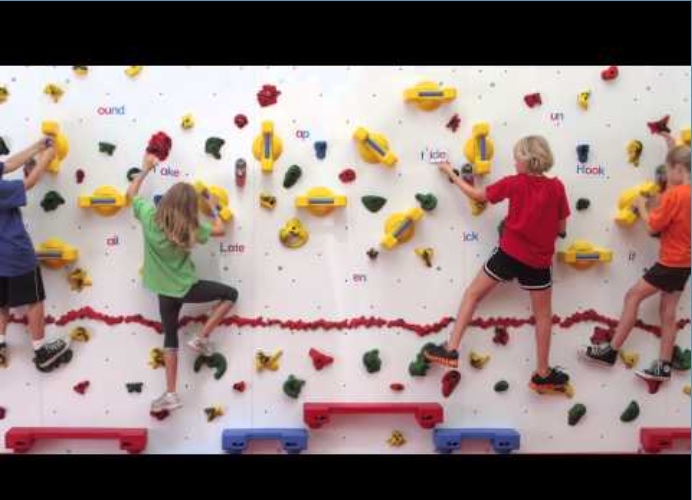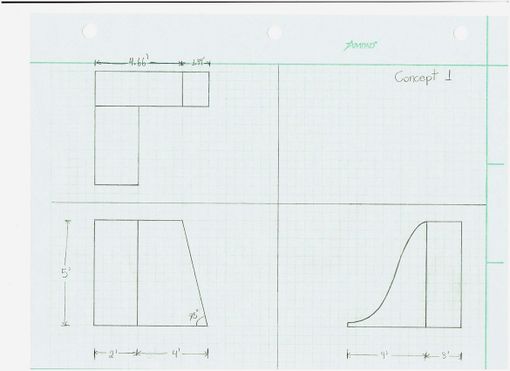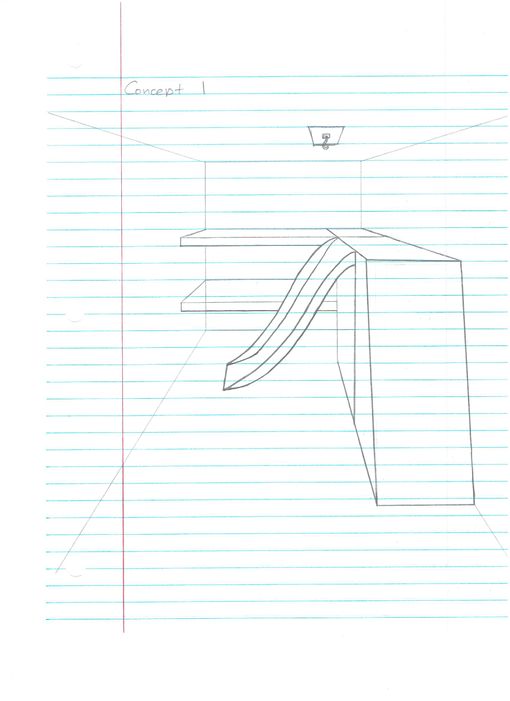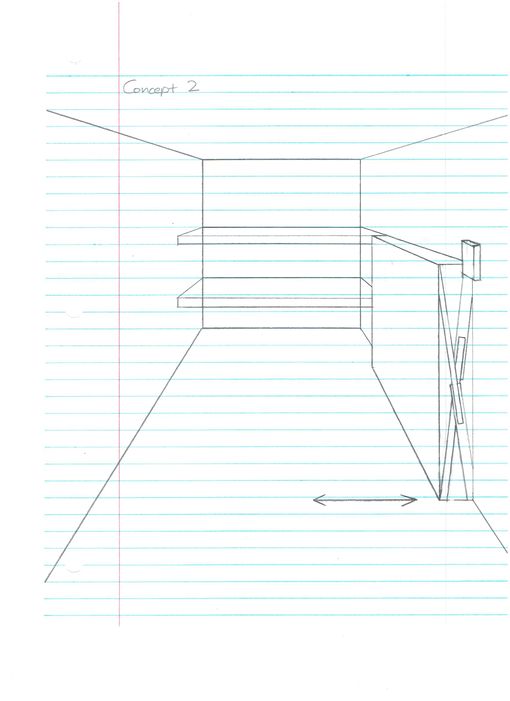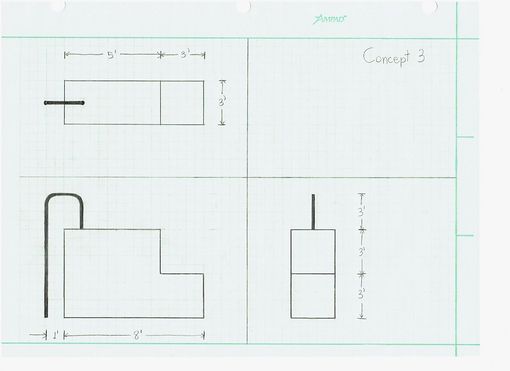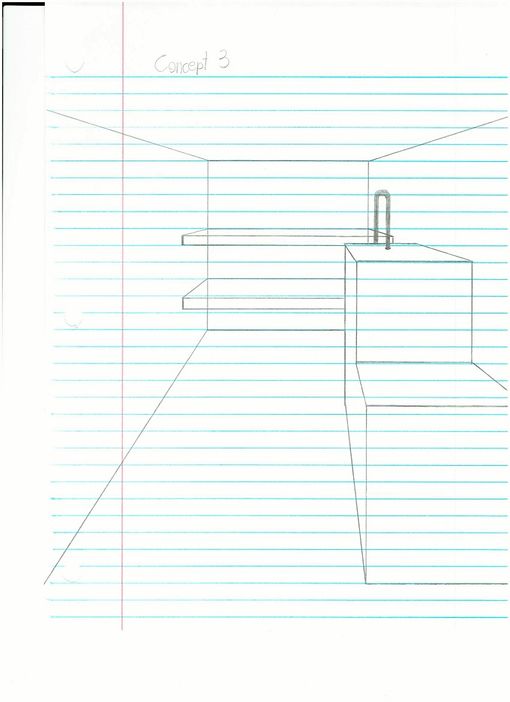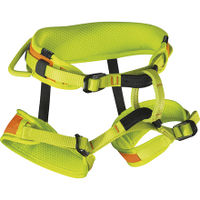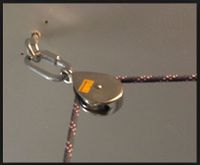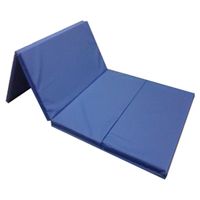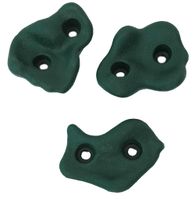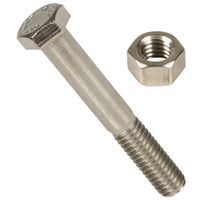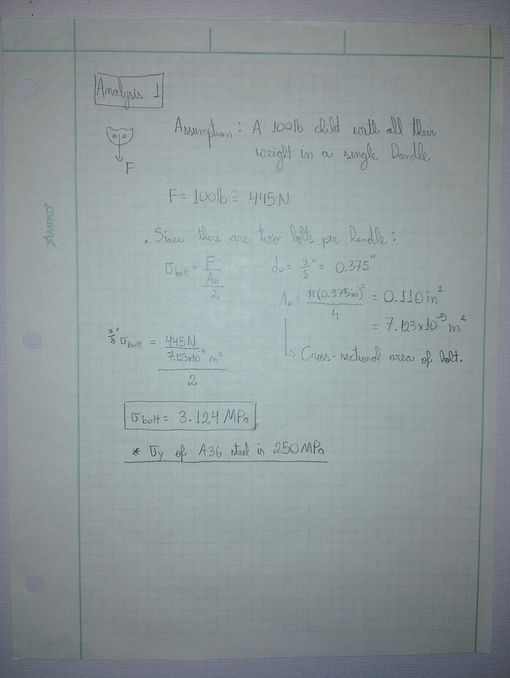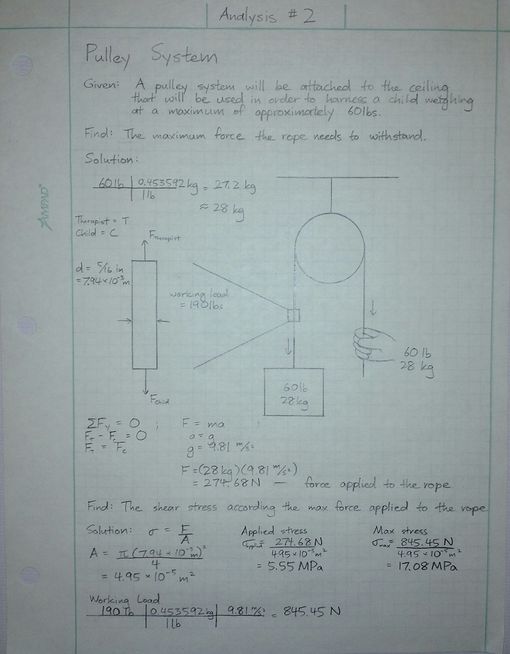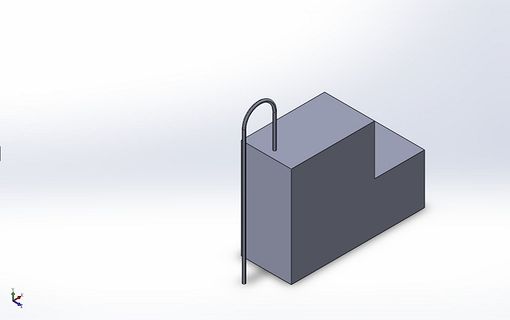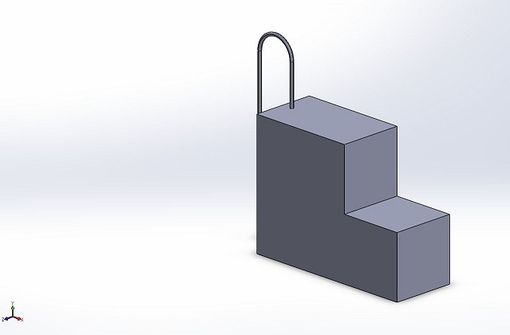Assistive climbing rock wall 2
Abstract
Statement of the Need:
The goal of this project is to design and manufacture an indoor assistive climbing wall for kids between ages 2-5 that either have physical limitations or need further development of their coordination skills. The therapist would also like for the equipment to be enjoyable for the kids in order to motivate them.
Findings of the Project:
Project Outcome:
Team members
Members:
Cory (left)
Giovanni (middle)
Kyusok (top)
Chujie (right)
Problem Statement/overview of the need
The goal of this project is to design and manufacture an indoor assistive climbing wall for kids between ages 2-5 that either have physical limitations or need further development of their coordination skills. The therapist would also like for the equipment to be enjoyable for the kids in order to motivate them.
Design Specifications
1. Space-efficient, in order to fit the final room with approximately a width of 12', length of 18', and height of 9'.
2. Wall has to have adjustable difficulties in order to allow children of ages 2 to 5 with max weight of 60 lbs. and max heights of 3 1/2 ft to use it.
4. No lights and sounds used to the extent that would inhibit the child.
5. The wall will be designed to accompany one child at a time.
6. Therapist will utilize safety measure such as a harness or mat to accompany the aid of the child.
7. A wall that provides a cause and effect experience to motivate and reward the child such as a slide or bell.
Background research
1. What exists already, similar products:
Everlast Climbing (for kids):
ADAPTIVE WALL
Dimensions: 8’H x 4’L
Climber Capacity: 1 Climber
Red-Relief Line: Yes
# of Hand Holds: 23
# of Unduplicated Hand Holds: 23
# of Adaptive Hand /Foot Holds: 3
# of T-Nuts: 66
Accepts Route-Setting Hand Holds: Yes
Installation Time: 1 hr
Age Appropriate: Elementary & Middle School
Video: https://www.youtube.com/watch?t=219&v=hMXjhIyFKVU
2. Identify gaps in existing products or technology to be addressed
2a. Walls lack diverse safety measures
2b. Walls are specially adapted for kid with physical limitations
2c. Availability is focused on bigger rooms such as gyms
2d. Products don't have a motivation and reward factor in addition to the wall
Conceptual Design
Design Concept 1
- Description: A 5-foot tall climbing wall with two difficulty settings, an easier side, with a 75 degree incline and plenty of handles for smaller/younger kids, and a harder/more traditional wall (90-degree, less handles) for older children. The wall has a platform on top which gives access to a slide. The purpose of the slide is to excite the child to climb the wall and have a fun ride down.
- Safety: This design would include a simple pulley system attached to the ceiling of the room. The pulley would run a rope attached to a harness around the child, while the other end would be held by the therapist, in order to suspend the child in case of any accidents. The rope would be 'let go' once the child sat on the slide. Finally, mats would be placed around the entire wall to provide extra safety and padding.
- Advantages/Disadvantages: The main advantage of this design is the slide. This would be the best incentive for a child to take part in the activity and push themselves for the reward of sliding all the way down. The biggest disadvantage is its size, since the slide would have to be way too long for it to be safe, and size is definitely a constraint in the target room.
- Schematics:
Design Concept 2
- Description: A simple climbing wall, 5 foot tall, with the ability to be angled against the wall. This design provides a wide range of usage, since it can be slanted in order to accommodate kids with less physical strength.
- Safety: This design would not require a harness, since it is just a straight wall. The supervision of the therapist would be enough in most cases, and mats would be placed on the bottom for cushion.
- Advantages/Disadvantages: This is the most space-efficient design, occupying virtually no space at all. However, the lack of incentives makes this design the least desirable one for children to utilize.
- Schematics:
Design Concept 3
- Description: A 6-foot tall climbing wall, with two climbing paths. An easier path, divided into two steps, to accommodate smaller children, and a regular climbing wall, for taller and/or older kids. At the top, on the other end of the steps, there will be a sliding pole. The pole serves as the incentive of the climb and provides a quick and fun way down.
- Safety: This design would include a simple pulley system attached to the ceiling of the room. The pulley would run a rope attached to a harness around the child, while the other end would be held by the therapist, in order to suspend the child in case of any accidents. The rope would be 'let go' once the child can safely grasp the sliding pole, under the therapist's supervision. Finally, mats would be placed around the entire design (where applicable) to provide extra safety and padding.
- Advantages/Disadvantages: The main advantages of this design is having a space-efficient incentive and having two different paths to accommodate the range of children using it. The main disadvantage is the necessity for the pulley system.
- Schematics:
Evaluate concepts/select candidate
| Size (Compact preferred) | Safety | Range of Use | Incentive Factor | Total (Out of 40) | |
|---|---|---|---|---|---|
| Concept 1 | 04 | 09 | 07 | 09 | 29 |
| Concept 2 | 09 | 08 | 05 | 04 | 26 |
| Concept 3 | 07 | 09 | 10 | 08 | 36 |
Detailed Design
This section will describe a detailed design process
Description of selected design
- Concept 3 was the one we chose to be our candidate. It is not as big as Concept 1 (due to not having a slide attached to it), and it is still significantly more "fun" than Concept 2 by having a sliding pole the kids can use for their way down. It also provides a good range of functions, since the younger kinds can climb it using the small increment steps and the older kids can climb the front panel of it that will function as a regular climbing wall straight to the top.
The idea is to make the whole construction jungle-themed. For example, the handles would all be green and the sliding rod would be like a vine off a tree branch.
- Safety: Here is what the harness, pulley, and mats would look like.
- Materials: Here is what the handles would look like. The wall would most likely be made out of plywood and the sliding pole, steel.
- Website for rocks: http://www.swingsetmall.com/small-climbing-rock-holds-set-of-12/?gclid=Cj0KEQjw75yxBRD78uqEnuG-5vcBEiQAQbaxSL_pMWSPRlypkkZm5GAYDXYcgDUlCQZg470-HYpLw18aAvxD8P8HAQ
Detailed description of selected design
- The walls will be made out of wood (construction-grade plywood?), the whole design will be bolted into the room's wall itself, so it doesn't move or tilt. The sliding pole will be made out of 2-inch steel and it will have a base at the bottom to also keep it from moving anywhere.
- Handles will be purchased online. There are climbing wall handles designed specially for children, they are smaller and come in all different shapes and colors. These will be bolted into the climbing surfaces using 3/8" bolts.
- The pulley will be installed on the ceiling with a regular hope and harness in the system. The mats on the ground will be regular gym mats.
Analysis
The analysis done below will be to determine the total load that each handle will need to sustain, the total load the rope will need to withstand without breaking, and the total load the pulley will need to withstand.
Engineering analysis 1
- This analysis has the purpose of determining the amount of stress that would occur in each bolt of each handle. The bolts used by our choice of handles are 3/8" bolts. We will be calculating the stress due to a 100lb force on each handle and compare it to the stress rating of A36 steel.
Engineering analysis 2
- This analysis was used to determine the maximum force the rope would need to withstand to hold a 60lb child. In these calculations, we used a diameter of 5/16-inch for our rope to calculate the shear stress on the rope.
Engineering analysis 3
CAD Drawings
Bill of Materials
| Quantity | Item | Description | Source | Part # | Price |
|---|---|---|---|---|---|
| 48+ | 3/8" Bolts w/ nuts | ||||
| x | 2 1/2" screws | Lowes | $24.97/5 pounds | ||
| 20 | joist hanger | Lowes | $0.99/each | ||
| 30 | 90 degree corner connector | Home Depot | $1.5/each | ||
| 30 | T-connector | Home Depot | $1.5/each | ||
| 7 | Plywood x 4' x 8' | Lowes | $14.63/each | ||
| 1 | 5/16 nylon rope | Amazon | $15.99/100ft | ||
| 1 | 1 1/2 eye pulley | Lowes | $2.99/each | ||
| 1 | harness | Amazon | $25/each | ||
| 5 | Folding Mat | $35/each | |||
| x | |||||
| x |
Assembly Instructions
Fabrication Process
Insert pictures of fabrication process
Testing and implementation
Describe testing, delivery, how used/received by the family
Photos of Completed design
Insert pictures of the final product
Instructions for safe use
Provide a clear summary of safe use for the family. Do not use the device unless supervised by an adult that has been fully understood the safe use of this product.

